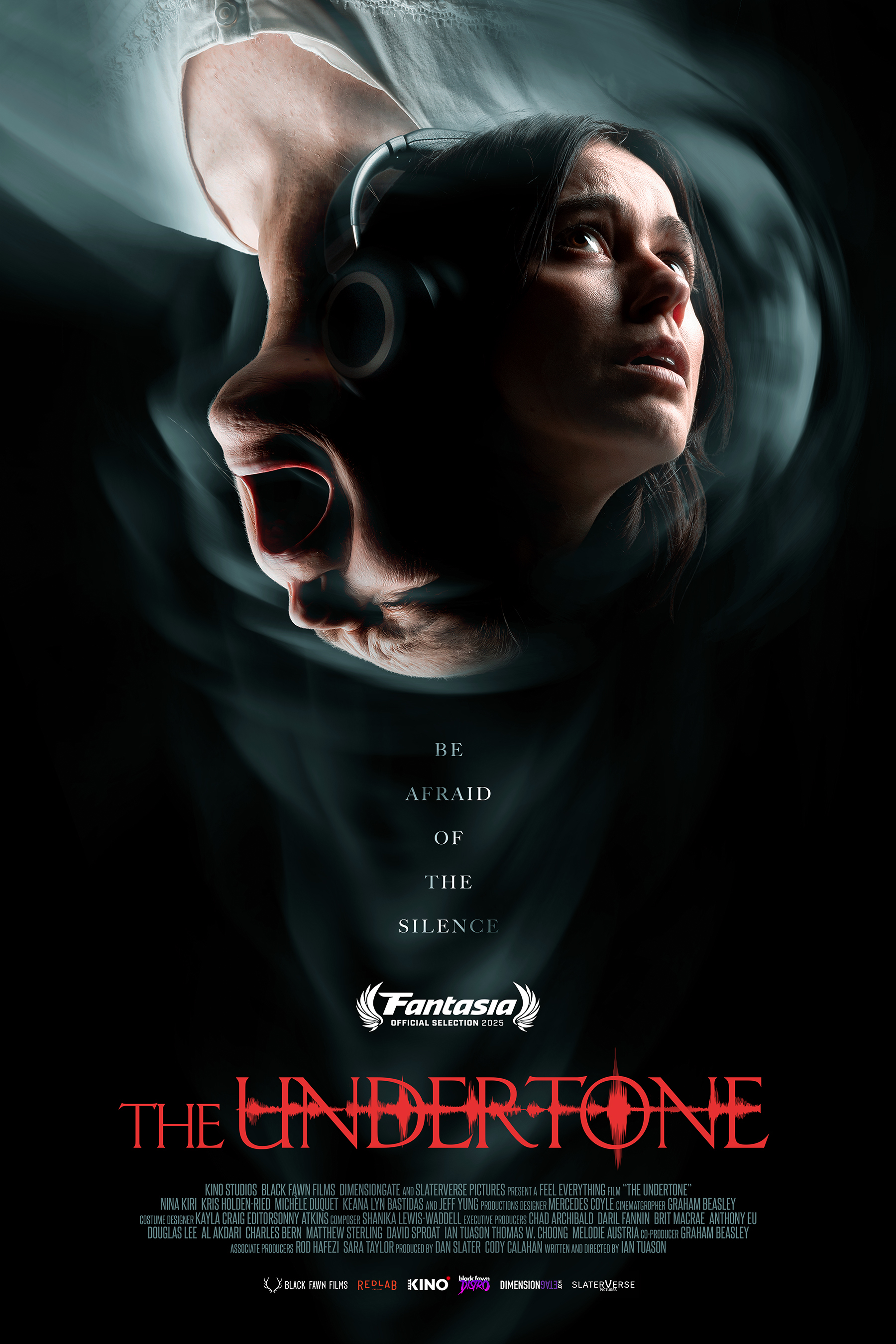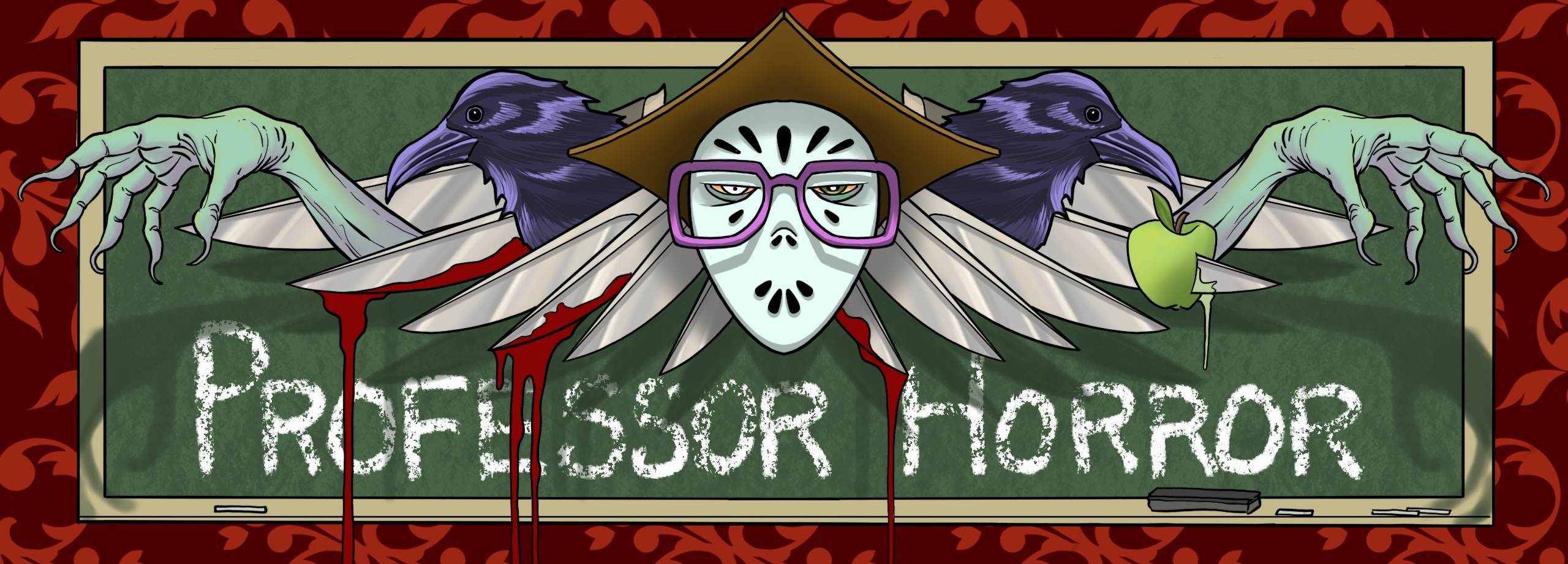
Where Horror Gets Studied, Skewered, and Celebrated.
Newest articles and reviews
(Fantasia Fest 2025 Review) Listening to the Void: Ritual, Dissociation, and the Sonic Terror of THE UNDERTONE
By. Professor Horror
Premiering at the 2025 Fantasia International Film Festival, Ian Tuason’s THE UNDERTONE quickly emerged as one of the most unsettling and original horror entries of the year. Its premise sounds deceptively simple…a woman alone in a house, caring for her dying mother, while recording a podcast about creepy audio files, but the film builds its terror not through jump scares or gore, but through the immersive, disorienting power of sound. More than a showcase for sound design, THE UNDERTONE explores how sound becomes a portal: a coping mechanism, a haunting, and a ritual. The familiar format of a paranormal podcast is reimagined as a kind of digital séance, where repetition, obsession, and invocation replace incantation and incense. As Evy (a riveting Nina Kiri) listens to increasingly disturbing recordings sent by an anonymous source, she isn’t just analyzing a supernatural mystery, but she’s participating in its summoning. Every press of the play button, every rewind, every volume tweak becomes part of a ceremony. This ritualistic framing elevates the film beyond a story of grief or the paranormal. It becomes a story about listening itself and what happens when the need to understand chaos tips into obsession. In Tuason’s world, podcasting isn’t a hobby. It’s a spell. A desperate attempt to impose order on the unthinkable. And once the ritual begins, it’s not so easy to stop.
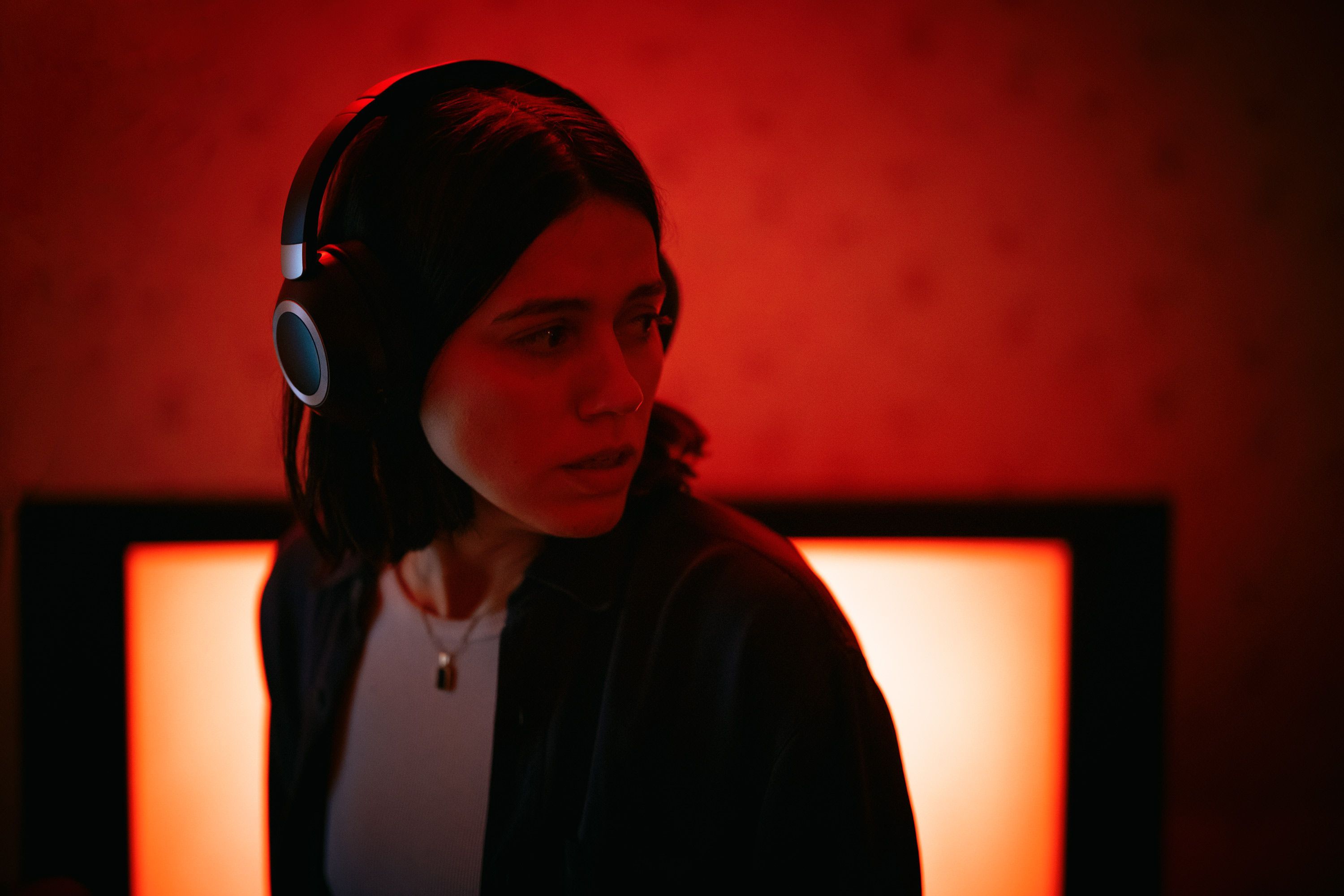
The story centers on Evy, a horror podcaster and full-time caregiver for her dying mother. Her co-host Justin (voiced by Kris Holden-Ried) sends her a set of ten anonymous audio files, which appear to be casual recordings of a couple, Mike and Jessa (Jeff Yung and Keana Bastidas) documenting the strange things Jessa says in her sleep. At first, the files are merely eerie, capturing fragmented sentences and restless movements. But as the tapes progress, they become increasingly disturbing: Jessa begins sleepwalking, whispering to unseen entities, and eventually chanting warped versions of nursery rhymes played in reverse. Evy listens, rewinds, isolates audio fragments, and tries to make sense of the increasingly disturbing material. But what begins as podcast fodder quickly unravels into something far more personal and sinister. While critics have rightly praised the film’s sound design, THE UNDERTONE isn’t just a technical exercise. It’s a film that thematizes listening not just as a sensory input, but as a psychological and spiritual act. Every time Evy puts on her noise-cancelling headphones, it’s more than just a practical choice…it’s a symbolic one. She’s choosing to retreat into a world she can control, a digital soundscape filled with structured fear, rather than confront the far messier reality of her mother’s impending death. The headphones offer sanctuary, but they also become a barrier, stripping her of environmental awareness and anchoring her deeper into dissociation.
In that sense, THE UNDERTONE taps into one of horror’s most enduring fears: the loss of self in the face of trauma. The sound files become her obsession, and the podcast becomes a ritual and one that is increasingly indistinguishable from a séance. With each listen, Evy isn’t just deciphering a mystery, but she’s summoning something. The podcast becomes a conduit, not just for storytelling, but for manifestation. Like a modern-day medium, she replays, enhances, and loops the recordings until they take on a power of their own. The conceit of the podcast-as-paranormal-conduit isn’t entirely new, but THE UNDERTONE pushes it further by merging digital and spiritual practices. Podcasting here is framed not as hobby or job, but as a kind of modern spiritualism that is structured around repetition, call-and-response, and belief versus skepticism. The tension between Evy’s self-professed skepticism and her increasing emotional unraveling mirrors the classic split between faith and logic in horror, but in a refreshingly updated form. She’s not debating a priest…she’s arguing with her audio software.
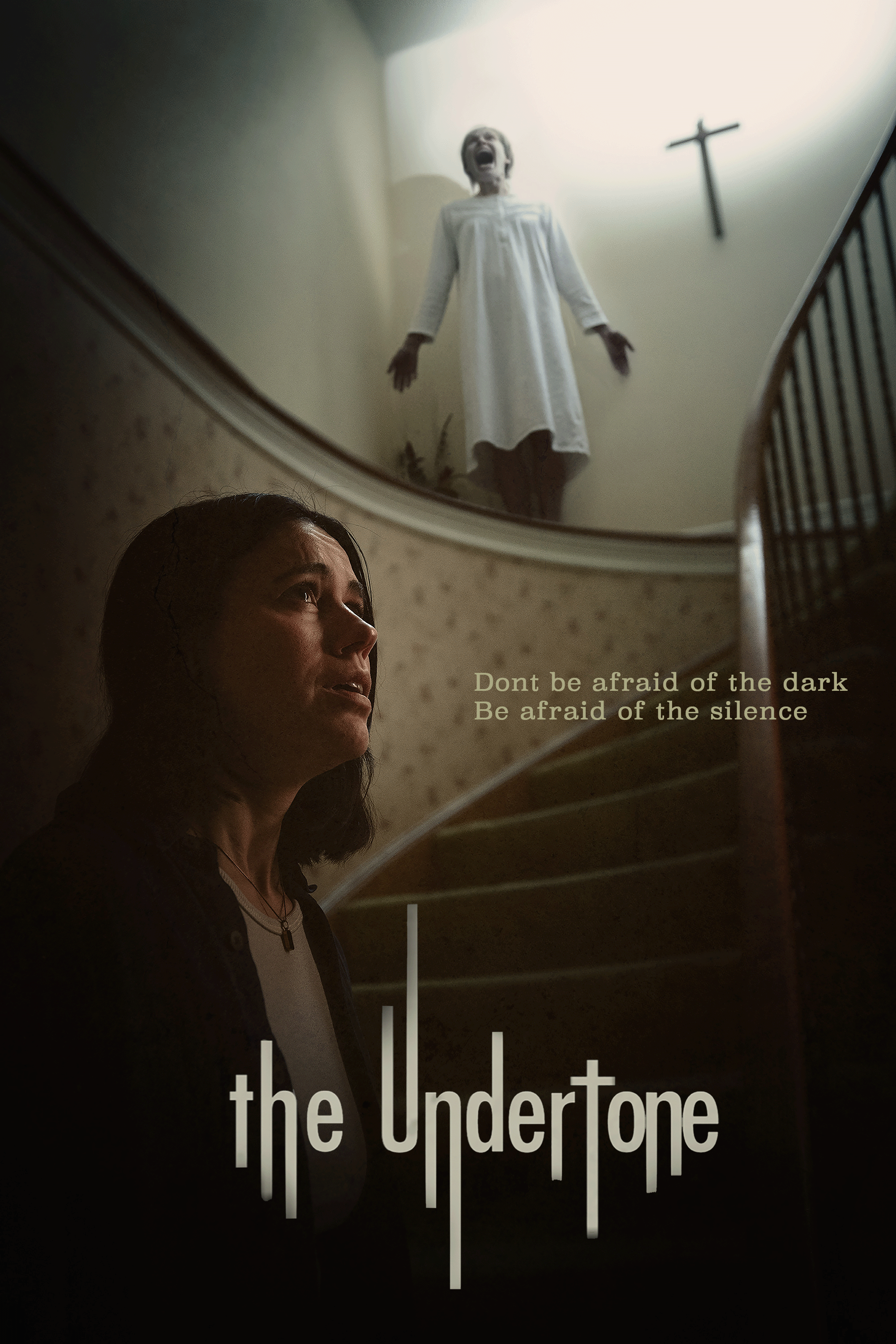
Visually, Tuason strips away almost all of horror’s traditional stimuli. The film is nearly devoid of gore, jump scares, or even movement. Instead, THE UNDERTONE is what you might call “anti-visual horror,” a film that dares you to look away, because what matters is what you hear. In several sequences, the screen goes so dark, it forces viewers to rely solely on the soundscape. It’s a bold choice, but one that pays off. These moments are among the most effective in the film because they mimic the very act of podcast listening: closed eyes, full attention, and total vulnerability. And that’s what makes the headphones so crucial to the film’s psychological structure. When Evy dons them, she is literally and metaphorically tuning out her surroundings. The headphones isolate her, turning her from participant in her own life into a spectator of someone else’s tragedy. Yet that tragedy (initially contained in the audio files) bleeds into her own reality, a slow creep that’s mirrored in the film’s pacing and editing.
Tuason resists the temptation to draw clean lines between the podcast horror and Evy’s own haunted life. There are no jump-cuts to sudden possessions or spinning heads. Instead, he leans into ambiguity and collapse of timelines, of character boundaries, of belief systems. At times, we’re not entirely sure whether Evy is performing skepticism or embodying it, whether she’s investigating the demonic…or inviting it. This ambiguity is key to the film’s disquieting effect: like the best horror stories, THE UNDERTONE doesn’t offer answers. It offers mood, atmosphere, and decay.
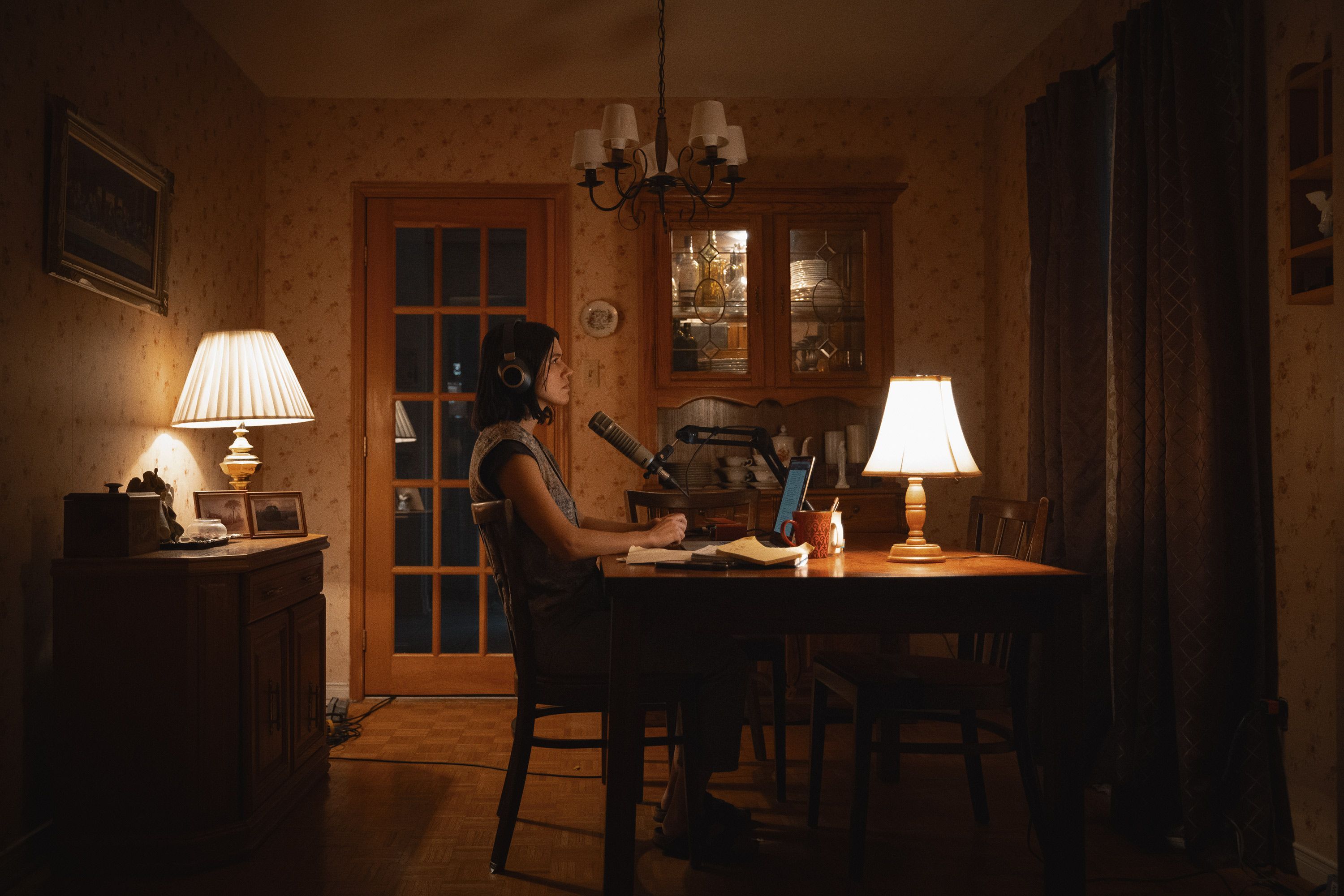
Which brings us back to the idea of ritual. Repetition is central to both religious ceremony and podcasting: ritualized openings, familiar structure, and the invocation of the dead…real or imagined. But in THE UNDERTONE, the ritual fails to contain what it conjures. The structure unravels. The voice from the void doesn’t stay safely in the headphones. Instead, the act of listening becomes an act of opening: of the self, of the home, and of the psyche. What enters is not just a demon from a distorted tape, but something more existential as we experience grief, dread, and the creeping realization that we are always straining to hear something we’d rather not face. THE UNDERTONE doesn’t just tell a ghost story…it sounds like one. It vibrates at the frequency of loss, fear, and spiritual exhaustion. And it’s in that low, private hum (so easy to miss, so hard to escape) that the film finds its deepest horror. So don’t watch THE UNDERTONE distracted. Don’t scroll. Don’t glance. Put on your headphones. Close your eyes. And listen. You might not like what answers back.
Grubby's Hole
About Professor Horror
At Professor Horror, we don't just watch horror: we live it, study it, and celebrate it. Run by writers, critics, and scholars who've made horror both a passion and a career, our mission is to explore the genre in all its bloody brillance. From big-budget slashers to underground gems, foreign nightmares to literary terrors, we dig into what makes horror tick (and why it sticks with us). We believe horror is more than just entertainment; it's a mirror, a confession, and a survival story. And we care deeply about the people who make it, love it, and keep it alive.
